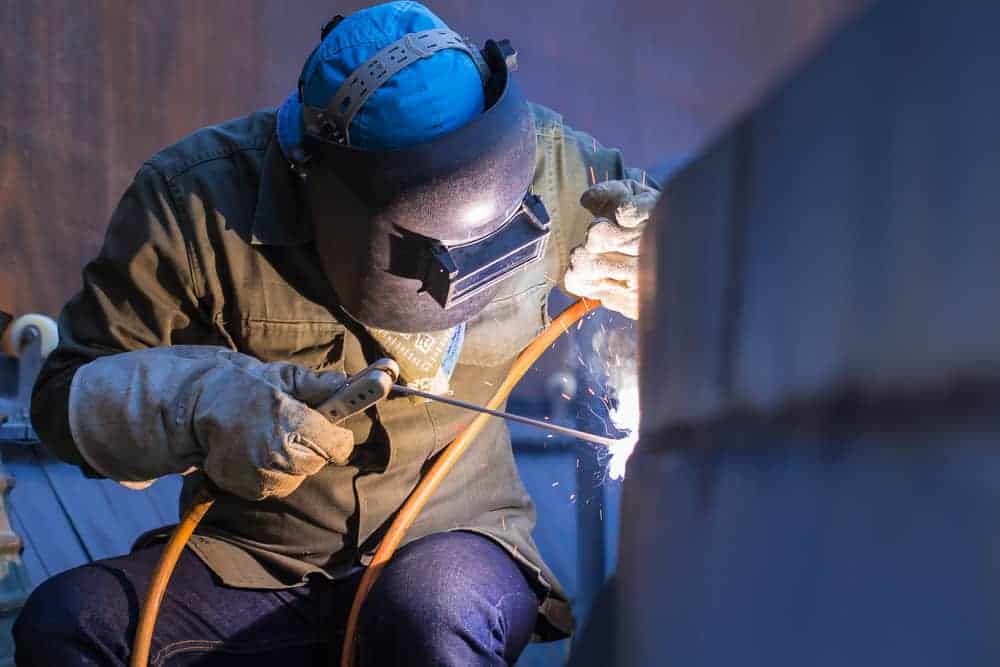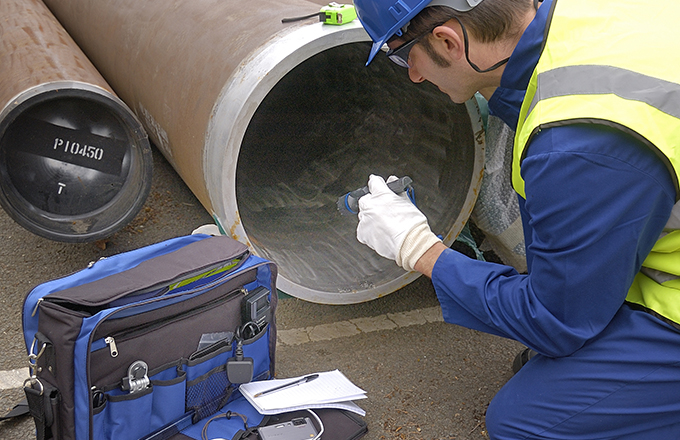Exploring the Principles of Welding Inspection: A Thorough Evaluation of Procedures, Tools, and the Value of Quality Assurance in Welding Industries
Welding assessment offers as a keystone in the maintenance of safety and structural stability throughout different markets. Comprehending the implications of these methods increases important questions regarding their effectiveness and the future direction of high quality assurance in welding.
Importance of Welding Examination
Welding evaluation plays a critical role in guaranteeing the stability and security of welded structures. It works as a methodical method to assessing weld top quality, recognizing possible defects, and guaranteeing compliance with recognized standards and specifications. The importance of welding inspection expands past mere adherence to policies; it is pivotal in safeguarding human lives and shielding financial investments in facilities.
Faulty welds can result in catastrophic failures, leading to significant financial losses, injury, or loss of life. For that reason, rigorous examination procedures are vital to discover concerns such as insufficient penetration, porosity, or splits before they escalate right into important failures. Additionally, reliable welding inspection adds to the overall efficiency and longevity of structures, making certain that they can stand up to the conditions for which they were created.
Moreover, the execution of welding evaluation cultivates a culture of quality and liability within the welding industry. By focusing on inspection, companies show their commitment to quality, thereby improving their credibility and competition in the marketplace. Eventually, welding examination is not merely a step-by-step action yet a basic component of engineering stability and safety and security assurance, important for the successful execution of welding jobs throughout different fields.
Secret Examination Processes
A comprehensive technique to welding evaluation entails numerous essential procedures that are vital for ensuring weld quality and structural honesty. The initial vital process is visual examination, which allows examiners to determine surface area defects such as fractures, porosity, and incorrect bead appearance. This technique works as an initial evaluation to ensure that the weld satisfies defined criteria.

Furthermore, damaging screening may be performed on sample welds to assess their mechanical homes and efficiency under anxiety. This procedure includes tensile, effect, and tiredness screening to validate that the weld can withstand operational problems.
Last but not least, documents and coverage are vital elements of the evaluation procedure. Preserving precise records of inspections, monitorings, and examination results assists guarantee compliance with sector requirements and helps with consistent enhancement in welding practices. Jointly, these key procedures develop the backbone of reliable welding assessment and quality control.
Tools for Weld Analysis
Numerous devices are vital for effective weld analysis, each made to analyze various facets of weld high quality and efficiency. Among one of the most widely made use of are visual examination devices, including magnifying glasses and borescopes, which allow inspectors to determine surface area flaws such as cracks, porosity, and inappropriate fusion.
In addition, ultrasonic testing (UT) tools is vital for detecting interior imperfections. This tool employs high-frequency acoustic waves to reveal stoppages within the weld, guaranteeing the honesty of the material. Radiographic screening (RT) tools, which use X-rays or gamma rays, similarly supply understanding right into the inner structure of welds, enabling the identification of spaces or incorporations.
For precise measurements, calipers and determines play a significant function in determining weld dimensions and making sure adherence to defined resistances. Firmness testers examine the mechanical residential or commercial properties of the weld, guaranteeing it fulfills efficiency standards.

Techniques for Evaluating Quality
How can the high quality of welds be reliably evaluated? A range of methods are utilized to examine weld stability and make sure adherence to defined criteria. Aesthetic examination Discover More Here is one of the most basic approach, permitting assessors to recognize surface area flaws such as fractures, porosity, or damaging. This non-destructive method works as a preliminary evaluation before more advanced methods are made use of.
Ultrasonic screening (UT) is click here for more one more popular technique that makes use of high-frequency acoustic waves to find interior defects within the weld. Houston Welding Inspection. This method gives a detailed sight of the weld's stability without endangering its architectural stability. In addition, radiographic screening (RT) utilizes X-rays or gamma rays to reveal interior problems, offering thorough insights into weld top quality
Magnetic bit testing (MT) works for finding surface and near-surface discontinuities in ferromagnetic materials, using electromagnetic fields and tinted particles to highlight issues. Color penetrant testing (PT) can be used to uncover surface-breaking problems by using a dye that permeates into splits and is consequently revealed.
Conformity With Industry Standards
Conformity with sector requirements is crucial for guaranteeing the top quality and safety of bonded structures. These requirements, developed by organizations such as the American Welding Culture (AWS) and the American National Standards Institute (ANSI), supply standards that govern the welding procedure, products, and evaluation methods. Sticking to these requirements not just ensures the structural stability of welds yet also reduces threats related to failures that might result in disastrous repercussions.

Welding examiners are entrusted with validating compliance with these standards throughout the welding process (Houston Welding Inspection). This includes examining welding procedures, monitoring welder credentials, and performing detailed examinations of the final product. Non-compliance can lead to substantial financial repercussions, job delays, and damage to a business's track record
In addition, conformity cultivates a society of quality assurance within the company. By developing clear assumptions and standards, firms can keep uniformity in their result and boost general efficiency. Routine training and updates on criteria are vital to keep personnel informed and experienced, guaranteeing that all aspects of welding operations fulfill or go beyond governing needs. Ultimately, dedication to sector requirements functions as a foundation for excellence in the welding sector, advertising security and dependability in welded frameworks.

Verdict
In verdict, welding evaluation offers as an essential part in maintaining the security and integrity of welded frameworks. Adherence to sector criteria guarantees conformity and advertises a culture of high quality within the welding sector.
Furthermore, the execution of welding inspection promotes a culture of quality and liability within the welding sector. Ultimately, welding assessment is not just a procedural step but a basic component of engineering honesty and safety and security assurance, essential for the successful execution of welding jobs throughout numerous sectors.
An extensive technique to welding assessment includes numerous vital processes that are crucial for ensuring weld top quality and structural stability. These requirements, developed by companies such as the American Welding Culture (AWS) and the American National Requirement Institute (ANSI), provide guidelines that govern the welding you can try here process, materials, and evaluation procedures.Welding assessors are entrusted with confirming conformity with these criteria throughout the welding procedure.